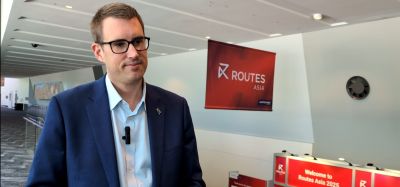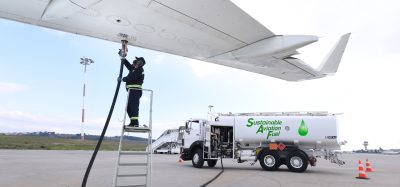Paving the way for alternative fuels
- Like
- Digg
- Del
- Tumblr
- VKontakte
- Buffer
- Love This
- Odnoklassniki
- Meneame
- Blogger
- Amazon
- Yahoo Mail
- Gmail
- AOL
- Newsvine
- HackerNews
- Evernote
- MySpace
- Mail.ru
- Viadeo
- Line
- Comments
- Yummly
- SMS
- Viber
- Telegram
- Subscribe
- Skype
- Facebook Messenger
- Kakao
- LiveJournal
- Yammer
- Edgar
- Fintel
- Mix
- Instapaper
- Copy Link
Posted: 9 June 2010 | Heather Haskin, Programme Manager, United States Air Force Alternative Fuels Certification Office (AFCO) & Mark Rumizen, Aviation Fuels Specialist, Aircraft Certification Division, FAA. | No comments yet
An aviation first: As part of the United States Air Force (USAF) long-term energy vision, the Alternative Fuels Certification Office (AFCO), consisting of a small cadre of systems engineers and managers, was formed to develop and execute repeatable processes to identify viable fuel candidates and certify them for fleet-wide operations. These activities require substantial collaboration with the fuels experts at the Air Force Research Laboratory (AFRL), the Air Force Petroleum Agency (AFPET), and the Defense Energy Support Centre (DESC). The AFCO is nearing completion of its original objective of certifying a 50/50 blend of its traditional JP-8 and Synthetic Paraffinic Kerosene (JP-8/SPK) by 2011. The synthetic component of this blend is derived using the Fischer-Tropsch (F-T) process that converts coal, natural gas, or biomass to fuel. Concurrently, the AFCO has undertaken a newer initiative to certify all platforms on a 50/50 blend of JP-8 and Hydro-processed Renewable Jet fuel (JP-8/HRJ), biofuels derived from plant or algal oils or animal fats, by 2013.
An aviation first: As part of the United States Air Force (USAF) long-term energy vision, the Alternative Fuels Certification Office (AFCO), consisting of a small cadre of systems engineers and managers, was formed to develop and execute repeatable processes to identify viable fuel candidates and certify them for fleet-wide operations. These activities require substantial collaboration with the fuels experts at the Air Force Research Laboratory (AFRL), the Air Force Petroleum Agency (AFPET), and the Defense Energy Support Centre (DESC). The AFCO is nearing completion of its original objective of certifying a 50/50 blend of its traditional JP-8 and Synthetic Paraffinic Kerosene (JP-8/SPK) by 2011. The synthetic component of this blend is derived using the Fischer-Tropsch (F-T) process that converts coal, natural gas, or biomass to fuel. Concurrently, the AFCO has undertaken a newer initiative to certify all platforms on a 50/50 blend of JP-8 and Hydro-processed Renewable Jet fuel (JP-8/HRJ), biofuels derived from plant or algal oils or animal fats, by 2013.
On 25 March, 2010, the USAF achieved the first major milestone of this ambitious initiative by flying the first-ever aircraft to be fully powered by a biofuel blend. On that day, an A-10 took off from Eglin Air Force Base in Florida for a 90-minute flight and landed without any noted problems or irregularities. The pilot said he noticed no difference between the flight using the new biofuel blend of JP-8 and Hydro-processed Renewable Jet fuel (JP-8/HRJ) and a typical flight using con – ventional JP-8 petroleum based fuel, making the historic flight a complete success. While U.S. comm ercial multi-engine aircraft have flown with one engine using the new fuel, none have ever attempted flight solely powered by a biomass jet fuel blend. With the A-10 flight, the USAF took another step towards demonstrating the feasibility of biofuels for aviation.
The USAF is paving the way for alternative jet fuel use in the military and commercial aviation sectors within the U.S., as well as internationally. Not only can alternative fuels be more environmentally friendly than conventional petroleum-based jet fuels, they can help reduce dependence on foreign sources of oil. Avoiding unstable petroleum prices through diversification of the energy supply will drastically enhance national security. Additionally, any decrease in demand for conventional oil should have an overall positive effect on prices, potentially leading to reductions in operating costs for both the military and commercial industry.
As the largest aviation fuel consumer in the U.S. is the Department of Defense (DOD), the USAF purchases roughly 2.4 billion gallons of aviation fuel a year. It has set a goal of replacing up to half of its continental U.S. (CONUS) jet fuel with an alternative fuel blend that is cost-competitive with JP-8 and has less impact on the environment (i.e., has a smaller greenhouse gas footprint than petroleum). The aim is to use alternative fuels that do not require modifications to existing systems or infrastructure. To meet its goal, the USAF has been aggressively certifying its fleet on candidate alternative fuels as they become available. This effort encompasses all types of military systems, including trainers, tankers, transports, bombers, fighters, helicopters, ground support equipment, vehicles, and base-level storage/delivery infrastructure.
Teaming up with commercial aviation
Early on in this effort the commercial aviation community recognised that they shared USAF concerns regarding the supply, cost and environmental impacts of conventional jet fuel. The Commercial Aviation Alternative Fuels Initiative (CAAFI) was formed to promote and facilitate the introduction of alternative aviation fuels in both the military and comm – ercial aviation sectors. Because the USAF maintains a large number of platforms that are commercial derivative designs (and retain FAA certification requirements), the USAF has become a key partner and participant with CAAFI, providing significant technical support to the evaluation of prospective alternative fuels. In addition, CAAFI has relied on the USAF for assistance with other initiatives relating to the certification and qualification of new fuels, environmental life cycle analysis of the carbon footprint of these new fuels, and partnering with commercial airlines to develop a strong and stable market for alternative fuels.
Evaluation of new fuels
All new fuel must go through rigorous analysis to ensure that it meets all performance specifications and has all other properties required for safe operation before it can be certified. To complete the necessary testing and evaluation, AFCO teams with numerous other organisations and services. In addition to AFRL, AFPET and DESC, numerous individual platform and sub-system programme offices, the U.S. Army, the U.S. Navy, original equipment manufacturers (OEMs), as well as the regulators, manufacturers, and operators in the commercial aviation sector have all contributed to alternative aviation fuel research and evaluation.
Analysis of potential new fuels involves a detailed investigation of the fuel properties to prove that the fuel is suitable, or fit-forpurpose, for aircraft operations. A key element of this testing evaluates the compatibility of the new fuel with specific materials found in both the wetted systems of aircraft, as well as any exterior surfaces that may be subjected to fuel spill/splash. Individual components, such as engines, auxiliary power units and fuel gauging systems, are tested before the fuel is ever put on an aircraft for flight. In addition, alternative fuels undergo Environmental Safety and Occupational Health (ESOH) screening for toxicity, fire protection testing, and emissions testing. Field Service Evaluations (FSE) of aircraft and infrastructure are completed to evaluate any effects the fuels might have on extended periods of operation.
Synthetic fuel acceptance
The USAF has nearly finished certification activities related to the JP-8/SPK blended fuel. This fuel is derived from the F-T process using the gasification of a carbon feedstock into carbon monoxide (CO) and hydrogen (H2) gases. The elements are then reassembled into long chain molecules of paraffinic hydro – carbon wax. The wax is broken into smaller molecules by catalytic reactions, resulting in the F-T fuel blending component consisting primarily of isoparaffinic kerosene. Developed in Germany prior to World War II, this process was used to produce fuel from coal (as petroleum became increasingly scarce during the war). Sasol, a South African petroleum conglomerate, began producing the fuel in the 1950’s and has been using a blend of the ‘synfuel’ produced from coal and Jet A-1 for commercial and military aircraft since 1999. In addition, the UK’s Ministry of Defense approved the use of the Sasol semi-synthetic fuel blend of up to 50% synthetic iso-paraffinic kerosene and conventional sources in the Jet A-1 specification DEFSTAN 91-91.
JP-8/SPK has been extensively analysed and tested. Ten of the USAF platforms are fully certified, and four others have demonstrated acceptable operations with final certification documents awaiting final coordination. Flight testing has been scheduled for two additional platforms. Multiple engines have undergone rigorous testing at Arnold Engineering Development Centre (AEDC) under the coordination of the engine manufacturers. As no significant operational differences have been observed between the blend and traditional JP-8 to date, JP-8/SPK has been evaluated and approved by airframe and engine manufacturers for use in engines and fuel system components. In addition, the fuel blend has been approved for use in auxiliary power units and fuel gauging systems using similar processes.
A Field Service Evaluation (FSE) of an F-15 included 88 sorties flown over more than 129 flight hours and showed no performance differences or adverse effects between the JP-8/SPK blend and straight JP-8. The lack of anomalies verified that the F-T derived fuel would not affect functionality of these highperformance aircraft, and demonstrated that synthetic fuels created from the F-T process provide predictable performance and operability, comparable to that of petroleumderived fuel.
A full-scale base level fuel-service infrastructure FSE took place from May through to November 2009, culminating in the March 2010 certification of JP-8/SPK for use in all current piping, pumps, valves, filters, storage tanks and handling equipment that receives, stores, and dispenses JP-8.
In the commercial sector of the U.S., the fuel blend component derived from the F-T process has been recently accepted via the commercial jet fuel specification. As representatives of the ASTM International Committee on Petroleum Products and Lubricants, CAAFI, with its USAF participants, helped accelerate approval of ASTM International Standard D7566, ‘Aviation Turbine Fuel Containing Synthesised Hydrocarbons,’ as a companion to the commercial jet fuel specification, ASTM D-1655. This allows the use of synthetic F-T fuels in a blend of up to 50% with conventional jet fuel (Jet A/Jet A-1). This specification is a generic approval, and expands the approval that was granted solely to Sasol in 1999. The USAF is currently coordinating with all stakeholders to align the JP-8 specification with the ASTM standards.
A greener alternative
The USAF plans to certify the entire ‘family’ of HRJ fuels, versus fuel made from specific individual feedstocks, to ensure the greatest variety of available alternatives. In an effort to represent the HRJ family of fuels, the USAF has acquired fuels derived from both plant oils and animal fats.
A contract was awarded by the Defense Energy Support Centre (DESC) on behalf of the USAF in September 2009, for the purchase of 100,000 gallons of HRJ made from each type of feedstock, with options to purchase an additional 100,000 gallons each. Using the valuable lessons learned from the F-T certification effort, AFCO is planning to streamline its certification process for these new biomass-derived fuels. The revised strategy will test the fuel on three of the USAF’s most difficult or fleet representative systems in order to prove its functional equivalence to JP-8. Plans call for detailed evaluation of high altitude, fighter, and transport platforms. The remainder of the fleet will be certified by similarity using data generated by these ‘pathfinder’ efforts. In addition, the same screening process used for the F-T fuel will be completed with regards to fit-for-purpose properties, materials compati – bility, toxicity and fire protection.
While the two HRJs being tested by the USAF are made from camelina oil and tallow, the data produced will be applicable to other HRJs fuels, such as those produced from algae. Camelina is a resilient oil-producing plant that can be grown in conditions unsuitable for food crops or can be used as a cover crop in the late autumn or winter. Its low input costs and ease of planting can reduce the economic impact of using an agricultural product for fuel without affecting the food supply. Tallow is an animal fat, a readily available byproduct of meat production that provides another renewable feedstock for biofuel. HRJ feedstocks provide sustainable alternative aviation fuels that have a smaller impact on the environment because they produce a smaller carbon emission footprint. It is anticipated that HRJ fuels will be approved for incorporation into ASTM D7566 as an additional SPK type fuel (‘bio SPK’), possibly as early as December 2010.
AFRL has completed much of its initial analysis of the HRJ fuels, with no significant differences noted between conventional JP-8 and the biofuel blend. Fit for purpose testing, as well as emissions tests on a laboratory engine, have been accomplished for a number of properties for both the camelina and the tallow blends. Initial materials compatibility testing has shown that the HRJ blend causes no issues with existing materials commonly found in USAF aircraft. The historic, 25 March 2010, A-10 flight provided a first-look at the how the fuel performs in a full-up system in an actual flight environment. This flight opened the door for more rigorous, larger-scale future testing planned as part of its certification programme.
Fuel sources on the horizon
In addition to the SPK and HRJ fuels, the Defense Advanced Research Projects Agency (DARPA), AFRL, and the FAA are investigating other possibilities for the future. A wide variety of potential processes and feedstocks exist, and they are at varying levels of development, including both blends and fully-synthetic fuels.
Microbes have been metabolically engineered to excrete hydrocarbon chains that form the basis of jet fuel. Through advanced fermentation, these microbes can convert biomass or CO2 into hydrocarbon fuels. While the typical byproduct is ethanol, the microbes can essentially be induced into producing the desired hydrocarbons.
Another option for the future is alcohol oligomerisation. This process involves creating alcohols through fermentation and then de-oxygenating these alcohols to form olefins. Oligomers are formed from first stringing these olefins together and then subjecting them to a traditional refinery process of hydroprocessing to create jet fuel.
AFRL and the FAA are also investigating the possibility of pyrolysis, which is heating the feedstock in the absence of air. Feedstocks considered ideal for pyrolysis are typically woody biomass, also called lignocellulosic biomass, including things such as switchgrass, corn stalks and leaves, and logging slash. The resulting bio-crude oil is then put through the standard refining process of hydroprocessing to produce fuels suitable for aviation use.
Availability of alternative fuels
Currently, F-T fuel is not produced in sufficient quantities in the U.S. to fulfill the USAF’s 2016 goal for domestic use, and HRJ has only been produced in research and development (R&D) quantities. Before manufacturers will make alternative fuels in quantities large enough to cost competitively support USAF CONUS operations, they want to be assured that the demand will be there. The high investment costs and significant risk involved in building plants for F-T production, or even to expand the availability of the feedstocks for HRJ, is more than they are willing to take on without demand assurance. Both the USAF and CAAFI recognise that the military certifications and commercial approval of these fuels will pave the way for that demand. Manufacturers have indicated that they are prepared to go to work as soon as aviation fuel consumers commit to incorporating these fuels into daily operations.
The USAF has made huge strides with its energy initiatives through the evaluation of potential alternative fuels, and it is on track to reach its 2016 goal of being positioned to purchase half of its CONUS aviation fuel from alternative domestic sources. Through its partnerships with the commercial industry, the USAF has helped lay the foundation for widespread use of these fuels in the United States. As research and development con – tinues, it is expected that there will be more potential sources of alternative aviation fuels, generating even more opportunities for the future of renewable fuels. These possibilities go a long way toward decreasing our dependency on foreign oil and stabilising fuel costs, while simultaneously protecting the environment.
About the Authors
Heather Haskin
Heather Haskin is a Programme Manager in the United States Air Force Alternative Fuels Certification Office (AFCO), located at Wright-Patterson Air Force Base, Ohio. The AFCO team is responsible for the overall management of the USAF fleet-wide alternative fuels certification effort. Ms. Haskin holds a Bachelor of Science degree in management from Wright State University in Dayton, Ohio and a Master of Business Administration (MBA) from Miami University in Oxford, Ohio.
Mark Rumizen
Mark Rumizen currently serves as a member of the Commercial Aviation Alternative Fuels Initiative (CAAFI) steering committee and is the leader of the CAAFI Certification & Qualification Panel. He has been employed by the Federal Aviation Administration (FAA) since 1991 and is currently the Aviation Fuels Specialist in the Aircraft Certification Division. Mark is a member of the ASTM International Aviation Fuels Subcommittee and served as the Chairman of the ASTM International Aviation Synthetic Fuels Task Force. This task force recently developed ASTM standard D7566, the first specification for synthetic aviation fuels. He was also elected to the Coordinating Research Council (CRC) Aviation Fuels Steering Committee. He was the recipient of the Department of Transportation’s 2010 Sustainability Achievement Award and of the FAA’s 2008 AEP Award for Technical Excellence for his work on alternative aviation fuels. He was also appointed as the alternate delegate for the United States at the ICAO Conference on Aviation and Alternative Fuels in Rio de Janeiro in late 2009. Prior to the FAA, Mark was employed by GE Aircraft Engines and Pratt & Whitney Aircraft in engineering and marketing roles. He has a Bachelor of Science degree in Civil Engineering from the University of Buffalo and a Master of Business Administration (MBA) from Boston University.
Issue
Related topics
Related organisations
Commercial Aviation Alternative Fuels Initiative (CAAFI), Federal Aviation Administration (FAA)

















